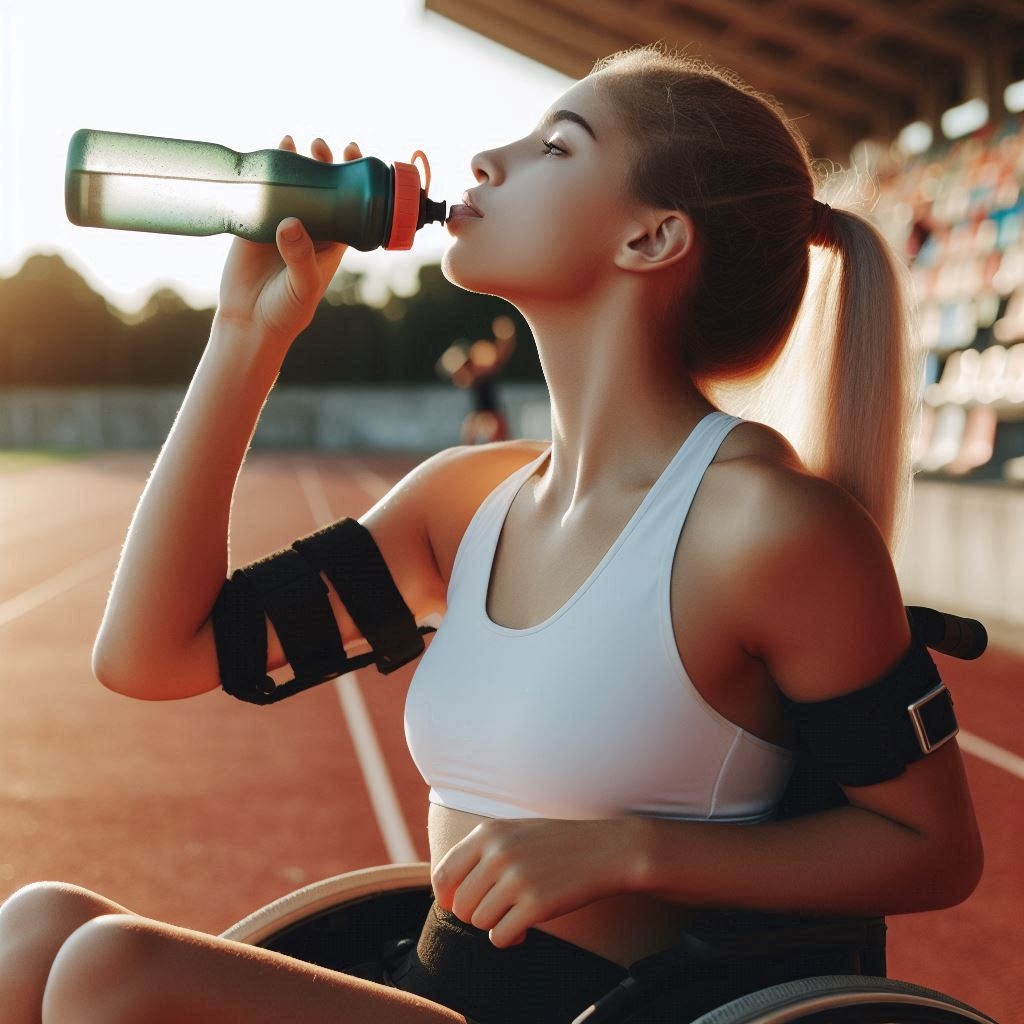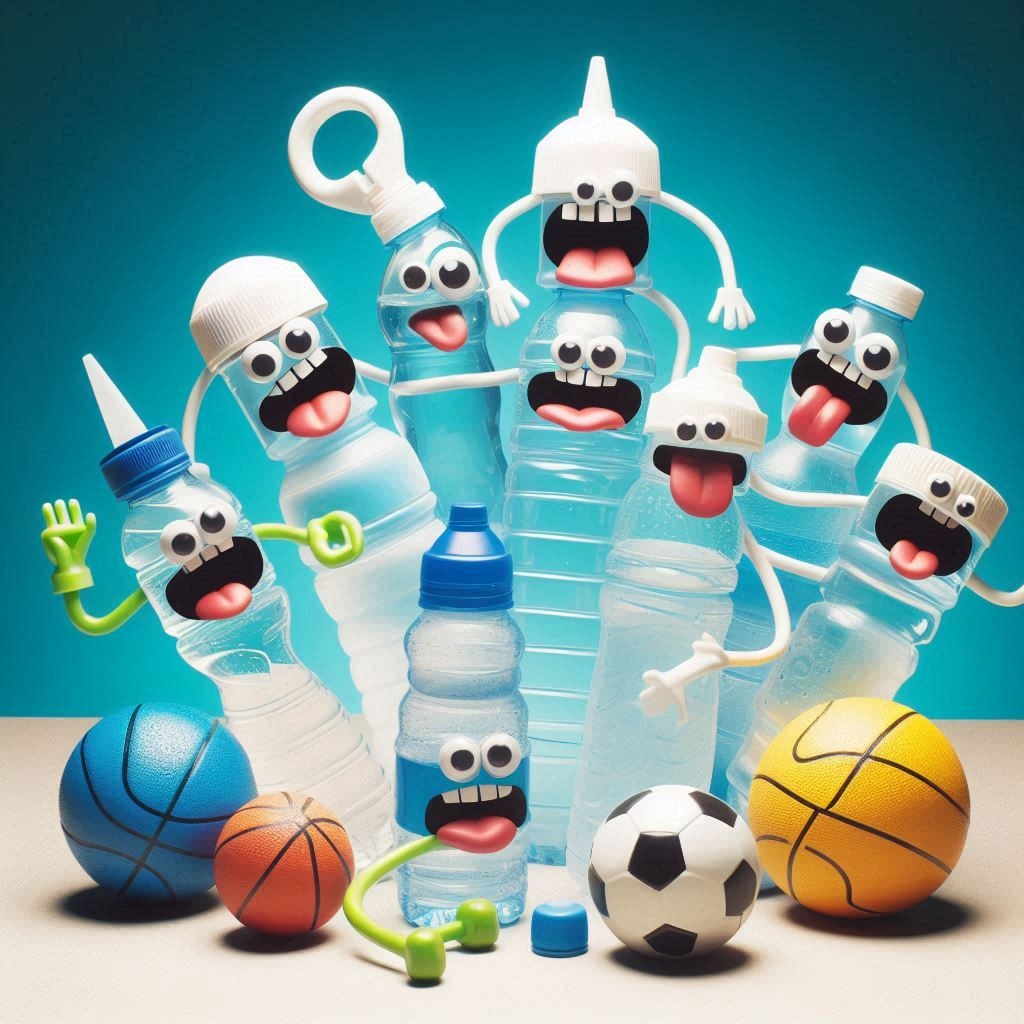Sport Water Bottles Amazing Clever Revolution
How the Simple Water Bottle Revolutionized Sports
The unassuming water bottle may seem like a minor accessory, but its impact on sports and athletic performance has been nothing short of revolutionary. From hydration strategies to environmental consciousness, the simple water bottle has played a significant role in changing the landscape of sports forever.

Enhanced Hydration and Performance
Hydration is a critical component of athletic performance. Proper hydration is super important in so many areas. It helps maintain body temperature, lubricate joints long term, and for energy. Dehydration, on the other hand, can lead to fatigue, muscle cramps, and a decline in physical performance. The introduction of the water bottle as a standard piece of equipment has made it easier for athletes to stay hydrated during training and competition.
Portable water bottles allow athletes to carry fluids with them wherever they go, ensuring that they can maintain optimal hydration levels. This has led to improved performance and endurance, particularly in endurance sports like running, cycling, and triathlon. The ease of access to water during exercise has also reduced the risk of heat-related illnesses, making sports safer for participants.
Customized Hydration Solutions
The evolution of the water bottle has introduced customized hydration solutions tailored to the needs of individual athletes. Modern water bottles come with features such as built-in filters, insulated walls to keep fluids at the desired temperature, and measurement markings to track intake. Some bottles are even designed to carry specific types of fluids, such as electrolyte-enhanced drinks, which help replenish essential minerals lost through sweat.
These advancements allow athletes to personalize their hydration strategies, ensuring that they receive the right balance of fluids and electrolytes to support their performance. This customization has been particularly beneficial in professional sports, where marginal gains can make the difference between winning and losing.
Different Types of Water Bottles for Sports
Water bottles have evolved to suit the specific needs of athletes across different sports, offering a variety of sizes, materials, and designs.
Plastic Water Bottles
Plastic water bottles are lightweight and durable, making them a popular choice for many sports. They are often made from BPA-free materials to ensure safety and can come with features such as built-in filters or straws for easy drinking.
Stainless Steel Water Bottles
These sports water bottles can keep beverages cold for up to 24 hours or hot for up to 12 hours, making them ideal for outdoor sports and activities that require temperature control.
Glass Water Bottles
Glass bottles are favored for their purity, as they do not retain flavors or odors from previous contents. These sports water bottles are normally protected in some way like a protective silicone sleeve. While heavier than plastic or stainless steel, glass bottles are a great choice for those who prioritize taste and health.

Collapsible Water Bottles
Collapsible bottles are designed for convenience and portability. They can be folded or rolled up when empty, saving space in bags and packs. These bottles are ideal for hiking, camping, and other outdoor activities where space is limited.
Insulated Water Bottles
Insulated bottles, often made from stainless steel, are perfect for maintaining the temperature of the beverage inside. They are a great choice for athletes who need their drinks to stay cold or hot during extended periods.
Infuser Water Bottles
Infuser bottles come with a compartment for adding fruits, herbs, or other flavorings to the water. These bottles are popular among those who prefer naturally flavored beverages and want to stay hydrated with a touch of freshness.
Hydration Packs
Hydration packs are backpacks equipped with a bladder and drinking tube, allowing for hands-free hydration. They are commonly used in endurance sports such as trail running, mountain biking, and long-distance hiking, where easy access to water is crucial.
Squeeze Water Bottles
Squeeze bottles are designed for quick and easy hydration, often used in sports like cycling and running. They allow athletes to drink on the go without needing to stop or unscrew a cap.
Smart Water Bottles
Smart bottles are equipped with technology to monitor fluid intake and remind athletes to stay hydrated. Some models sync with fitness apps and wearable devices, providing real-time data on hydration levels and overall health metrics.
Sports-Specific Bottles
Some water bottles are designed with specific sports in mind, featuring unique shapes, sizes, and functionalities. For example, cycling bottles are designed to fit securely in bike bottle cages, while running bottles might have ergonomic grips for easy carrying.
Environmental Impact and Sustainability
The widespread use of disposable plastic bottles has raised significant environmental concerns. Sports events, both amateur and professional, have historically generated large amounts of plastic waste. The shift towards reusable water bottles has been a major step forward in promoting sustainability within the sports community.
Athletes and teams have increasingly adopted reusable water bottles made from materials like stainless steel, glass, and BPA-free plastics. This move not only reduces plastic waste but also encourages a culture of environmental responsibility. Many sports organizations and events now provide refill stations to support the use of reusable bottles, further minimizing the ecological footprint of sporting activities.
Para Sports Water Bottles
How Water Bottles Have Revolutionized Para Sports
Water bottles have had a transformative impact on para sports, offering numerous benefits to athletes with disabilities. These benefits include enhanced hydration, tailored accessibility, technological advancements, increased awareness, environmental sustainability, and empowerment.
Enhanced Hydration and Accessibility
For para athletes, the availability of specialized water bottles with adaptive designs ensures they can stay hydrated easily and efficiently, significantly improving their performance and safety.
Customization for Individual Needs
Modern water bottles come with various features such as adaptive straws and ergonomic designs to cater to the unique requirements of para athletes, allowing for personalized hydration strategies.
Technological Advancements
The integration of smart technology into water bottles, which tracks fluid intake and reminds athletes to hydrate, has been particularly beneficial for para athletes, ensuring optimal hydration and performance.
Increased Awareness and Inclusivity
The development and use of adaptive water bottles have raised awareness about the importance of inclusivity in sports, encouraging manufacturers to create products that cater to diverse needs.
Environmental Sustainability
The shift towards reusable water bottles among para athletes has contributed to reducing plastic waste and promoting sustainable practices within the sports community.
Empowerment and Independence
Adaptive water bottles empower para athletes by providing greater independence, enhancing their confidence and self-sufficiency during training and competition.
Para Sports & Water Bottles
The humble water bottle has brought significant advancements to para sports, supporting athletes in their pursuit of excellence while promoting inclusivity, sustainability, and overall well-being.
Branding and Sponsorship Opportunities
Water bottles have also become valuable branding and sponsorship tools in the sports industry. Custom-branded bottles featuring team logos, sponsor names, and motivational messages have become commonplace. These bottles serve as walking advertisements, providing exposure for sponsors and reinforcing team identity.
For athletes, branded water bottles offer a way to engage with fans and promote personal brands. High-profile athletes often collaborate with companies to create signature water bottles, which are then marketed to fans as part of merchandise lines. This trend has created additional revenue streams for both athletes and sports organizations.

Health and Safety Considerations
The design and materials used in modern water bottles have significantly improved over the years, addressing health and safety concerns. Early plastic bottles often contained harmful chemicals like BPA, which could leach into the water. Today, most water bottles are made from BPA-free materials, ensuring that they are safe for repeated use.
Additionally, the development of ergonomic designs and easy-to-use spouts has made water bottles more convenient and hygienic. Athletes can quickly hydrate without breaking their stride or contaminating their water source. These improvements have made water bottles a reliable and essential tool for athletes at all levels.
Different Sizes for Different Sports
Water bottles now come in various sizes and forms to meet the specific needs of different sports. Smaller, lightweight bottles are favored by runners and cyclists for easy portability. In contrast, larger bottles or hydration packs are ideal for long-distance hiking and endurance sports, ensuring athletes have ample hydration over extended periods.
For team sports like soccer or basketball, medium-sized bottles with easy-grip designs are popular, allowing players to quickly rehydrate during breaks. Hydration backpacks, equipped with built-in bladders and drinking tubes, have become essential gear for trail runners, mountain bikers, and adventure racers, enabling hands-free hydration while on the move. These varied sizes and specialized designs enhance the convenience and efficiency of hydration across different sports.
Technological Advancements
Technological advancements have further transformed the humble water bottle into a high-tech piece of equipment. Smart water bottles equipped with sensors can track fluid intake and remind athletes to hydrate at regular intervals. Some models even sync with fitness apps and wearable devices, providing real-time data on hydration levels and overall health metrics.
Advanced materials and engineering have also improved the durability and functionality of water bottles. Insulated bottles can keep liquids cold for up to 24 hours or hot for up to 12 hours, catering to the needs of athletes in various weather conditions. Additionally, self-cleaning water bottles using UV-C light technology ensure that the water remains pure and free of bacteria, making them ideal for outdoor and endurance sports.

Cultural Shift and Awareness
The simple water bottle has also played a role in shifting cultural attitudes towards hydration and health. The visibility of athletes using water bottles has raised awareness about the importance of staying hydrated, not just for athletic performance but for overall well-being. This cultural shift has influenced people of all ages to prioritize hydration in their daily lives.
Schools, workplaces, and community centers have adopted the use of water bottles, promoting a culture of regular hydration. Public health campaigns often use the image of the water bottle to encourage healthy habits, reinforcing its status as a symbol of health and wellness.
Conclusion
The humble water bottle has revolutionized sports in numerous ways, from enhancing athletic performance and safety to promoting environmental sustainability and health awareness. Its evolution from a simple container to a customizable, branded, and eco-friendly tool reflects the broader changes in sports and society. As athletes continue to push the boundaries of performance, the water bottle will undoubtedly remain a crucial ally in their journey.
Whether you’re a professional athlete, a weekend warrior, or simply someone who values staying hydrated, the water bottle is a testament to how simple innovations can have a profound impact on our lives and how we play sports.
For examples of Sports Water Bottles or if you need to get one check out these.
Join the Discussion
How has the water bottle influenced your sports or fitness routines? Do you have a favorite type of water bottle that you swear by? Have you noticed a difference in your performance or hydration levels since using a particular kind of bottle?






I really enjoy studying on this website , it contains superb blog posts.
Hey! I just wish to give a huge thumbs up for the nice information you could have here on this post. I will be coming again to your blog for more soon.
I am not sure where you are getting your info, but great topic. I needs to spend some time learning much more or understanding more. Thanks for fantastic information I was looking for this information for my mission.
Really Appreciate this post, can you make it so I get an alert email when there is a fresh post?
I truly enjoy studying on this web site, it holds excellent articles.
Of course, what a great site and instructive posts, I will bookmark your site.All the Best!
Hi there, I found your website via Google while looking for a related topic, your website came up, it looks great. I have bookmarked it in my google bookmarks.
Wow! This can be one particular of the most beneficial blogs We have ever arrive across on this subject. Actually Magnificent. I’m also a specialist in this topic therefore I can understand your effort.
Great write-up, I am normal visitor of one’s website, maintain up the excellent operate, and It is going to be a regular visitor for a long time.
hi!,I like your writing so a lot! proportion we be in contact extra approximately your article on AOL? I need an expert in this house to unravel my problem. May be that’s you! Taking a look forward to see you.
magnificent post, very informative. I wonder why the other specialists of this sector do not notice this. You should continue your writing. I’m sure, you have a great readers’ base already!
I like what you guys are up also. Such clever work and reporting! Keep up the excellent works guys I have incorporated you guys to my blogroll. I think it’ll improve the value of my website 🙂
You could certainly see your enthusiasm in the work you write. The world hopes for more passionate writers like you who aren’t afraid to say how they believe. Always follow your heart.
Hiya, I am really glad I have found this information. Today bloggers publish only about gossips and web and this is actually annoying. A good site with exciting content, that’s what I need. Thank you for keeping this web site, I will be visiting it. Do you do newsletters? Can’t find it.
I want to convey my love for your kind-heartedness for visitors who should have help with that area. Your special commitment to passing the solution all over ended up being wonderfully beneficial and have consistently helped most people just like me to arrive at their objectives. Your personal valuable facts implies a great deal to me and substantially more to my fellow workers. Thanks a lot; from all of us.
I am glad that I noticed this web site, just the right info that I was searching for! .
I¦ve been exploring for a bit for any high-quality articles or blog posts in this sort of area . Exploring in Yahoo I ultimately stumbled upon this website. Studying this info So i¦m satisfied to show that I’ve an incredibly just right uncanny feeling I discovered just what I needed. I such a lot no doubt will make sure to do not disregard this web site and give it a glance regularly.
I am glad to be a visitor of this utter blog! , thanks for this rare info ! .
Way cool, some valid points! I appreciate you making this article available, the rest of the site is also high quality. Have a fun.
I believe this site has some real superb information for everyone : D.
I do enjoy the manner in which you have presented this matter and it really does offer me personally some fodder for thought. Nevertheless, coming from just what I have seen, I just hope when the actual remarks pack on that people today remain on point and don’t get started upon a soap box regarding some other news du jour. Still, thank you for this superb point and though I do not necessarily concur with the idea in totality, I regard your point of view.
Some genuinely wonderful info , Gladiola I discovered this. “The historian must have some conceptions of how men who are not historians behave.” by Edward Morgan Forster.
Very interesting information!Perfect just what I was searching for!
It is truly a great and useful piece of information. I’m happy that you simply shared this useful info with us. Please stay us up to date like this. Thanks for sharing.
I really like your blog.. very nice colors & theme. Did you design this website yourself or did you hire someone to do it for you? Plz answer back as I’m looking to construct my own blog and would like to know where u got this from. thanks
I have been absent for a while, but now I remember why I used to love this website. Thank you, I?¦ll try and check back more often. How frequently you update your website?
I?¦m not sure where you’re getting your info, but great topic. I needs to spend a while learning much more or figuring out more. Thanks for magnificent info I was on the lookout for this information for my mission.
Hi, i think that i saw you visited my website thus i came to “return the want”.I am attempting to to find issues to enhance my web site!I suppose its adequate to make use of some of your ideas!!